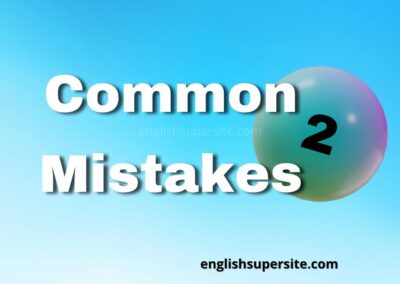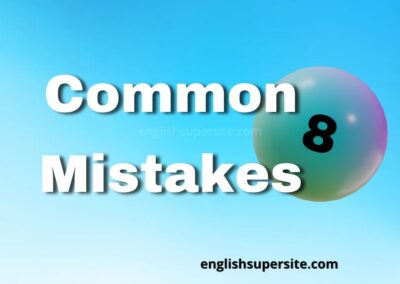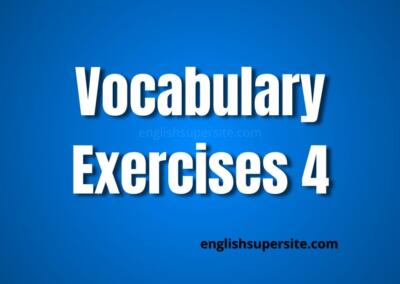
Common Mistakes
English is an international language that can be used for communication in a variety of situations. Even fluent English speakers, though, occasionally make mistakes. These errors may occur for several reasons, including the complexity of the language, variations in grammatical usage, or the effects of one’s original tongue. It can also be pronunciation, vocabulary usage, prepositions, articles, and word order.
The use of improper grammar is one of the most frequent errors in English. With its numerous tenses, articles, prepositions, and sentence patterns, English grammar can be complicated. Common mistakes include misplacing modifiers, employing the wrong verb tenses, and mixing up singular and plural nouns. For example, using “I have went” instead of “I have gone” or “He don’t” instead of “He doesn’t” are grammatical errors that can easily slip into conversation or writing.
Vocabulary mistakes may happen when words with similar sounds, but different meanings are used, or when idiomatic idioms are misused. Using “accept” instead of “except”.
Prepositions are difficult to translate because they often lack direct translations in other languages. The incorrect use of “in,” “on,” or “at” can have an impact on the accuracy of describing location or time.
The incorrect usage of articles such as “a,” “an,” and “the” can cause ambiguity. Using “a” instead of “an” or omitting “the” when essential can affect the message’s intelligibility.
When the subject, verb, and object are not correctly positioned in a sentence, word order mistakes might result. Words in the wrong order can confuse and make statements sound strange.
Learners can improve their English language abilities and capacity to communicate effectively and confidently by being aware of these typical mistakes. Here we will look at some of the most typical errors that English language learners make.
Study Also:
Abbreviations Cohesion and Coherence Collocations Comparative Conditionals Frequent Errors Future Continuous Future Perfect Future Perfect Continuous Future Simple Homonyms Interjections Journaling Learn English Linking Words Logical Flow Past Continuous Past Perfect Past Perfect Continuous Past Simple Plural Present Continuous Present Perfect Present Perfect Continuous Present Simple Pronunciation Question Tags Quiz Quotes Simple Future Simple Past Simple Present Spelling Superlative Transition Words
Share with your friends!




















